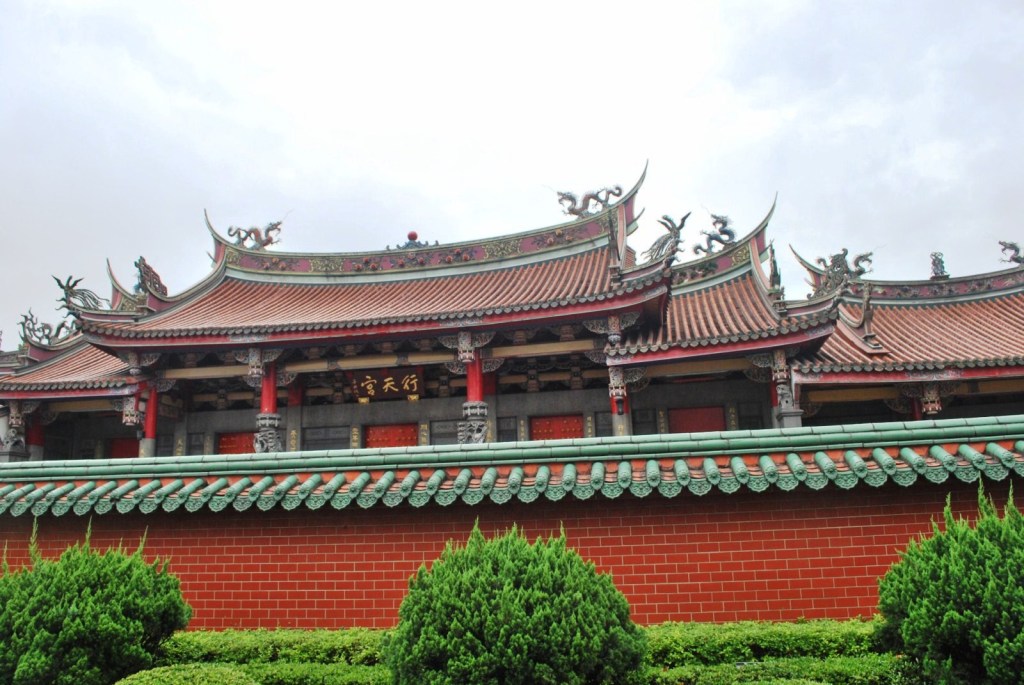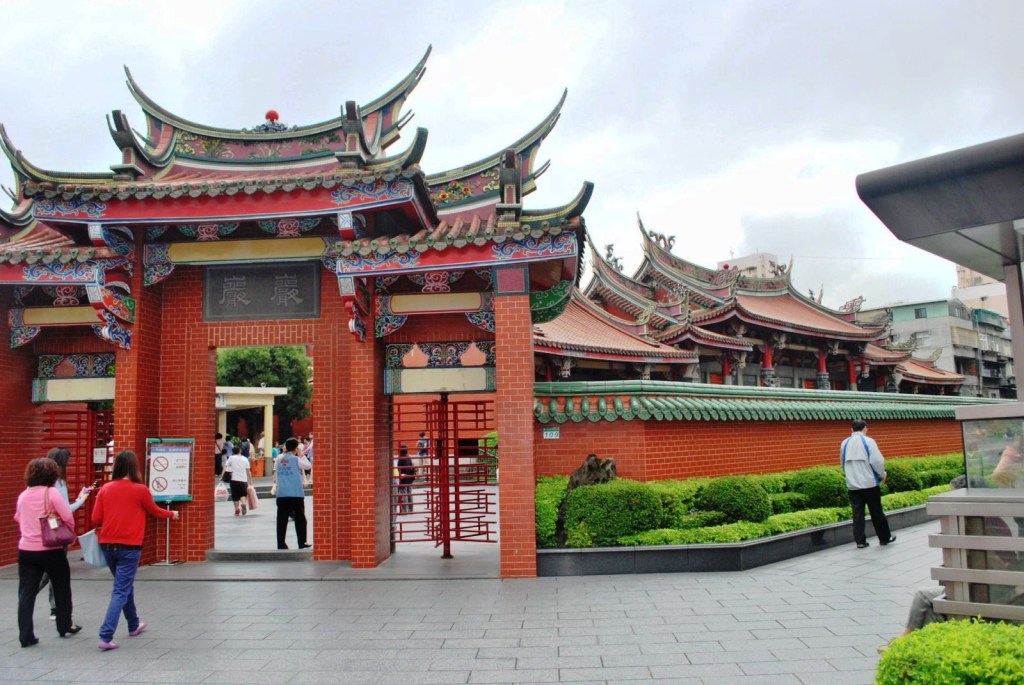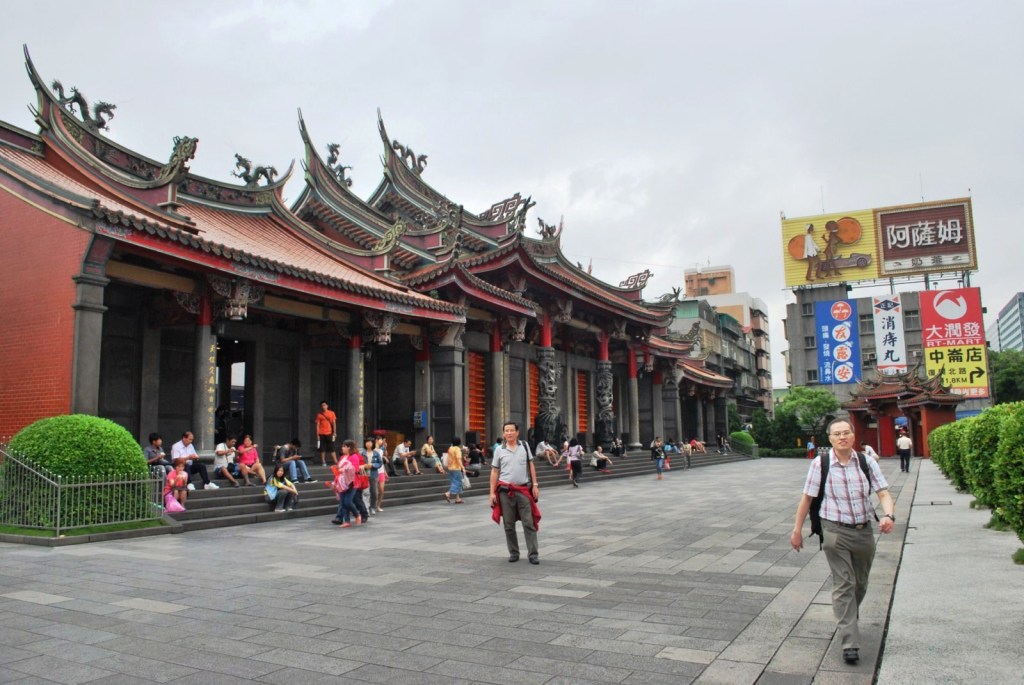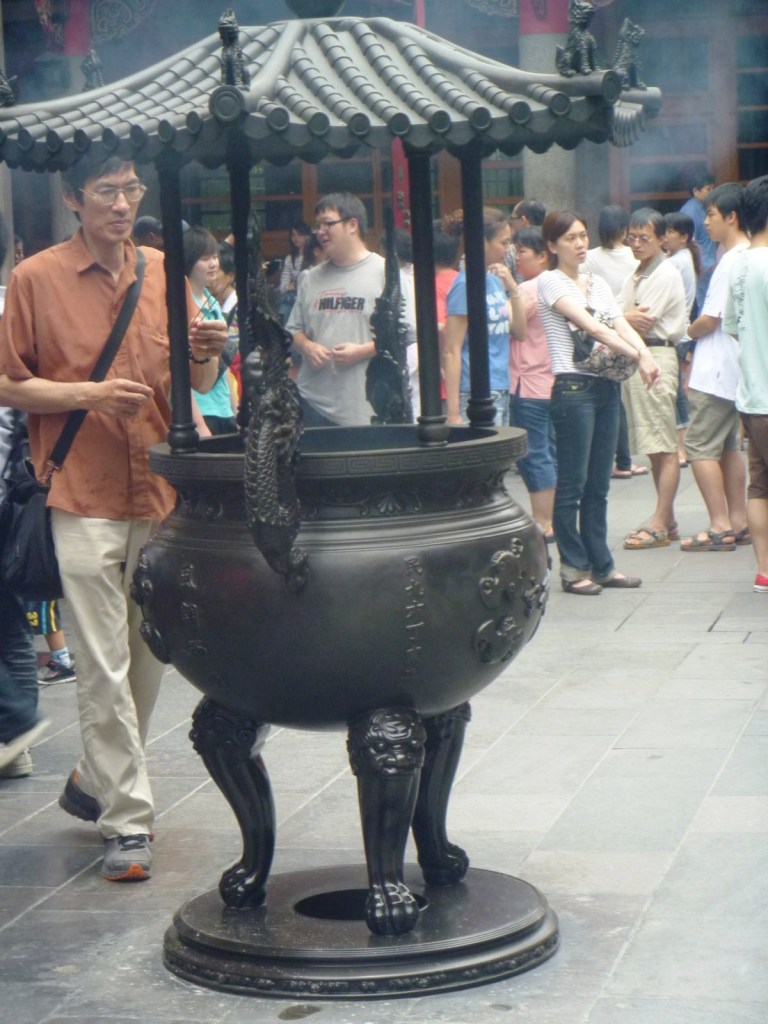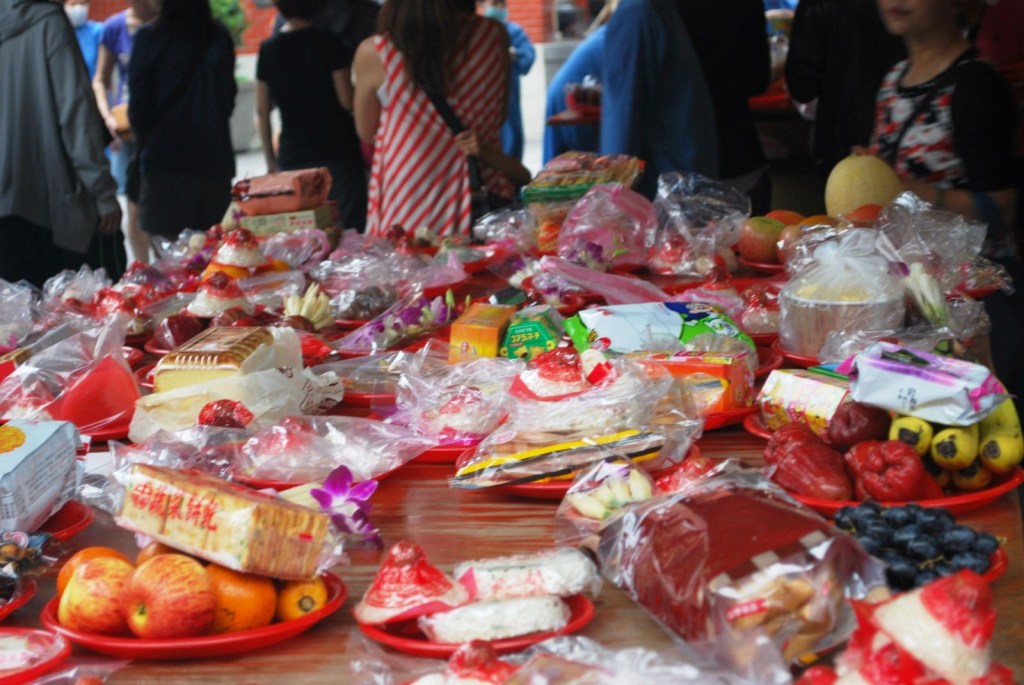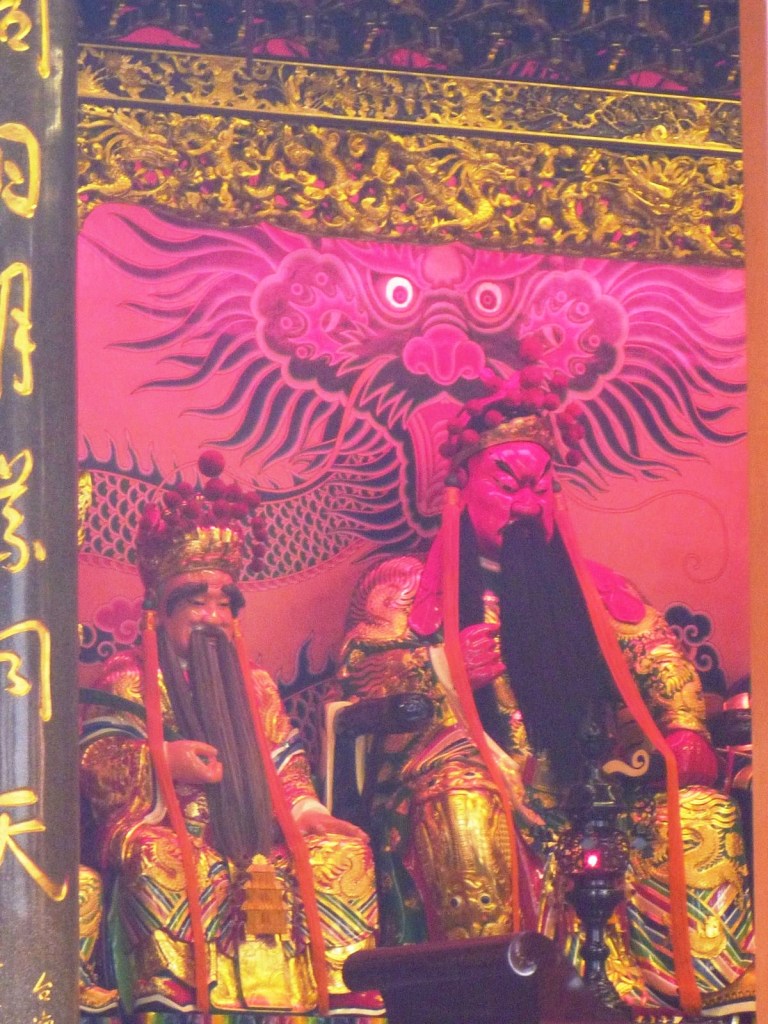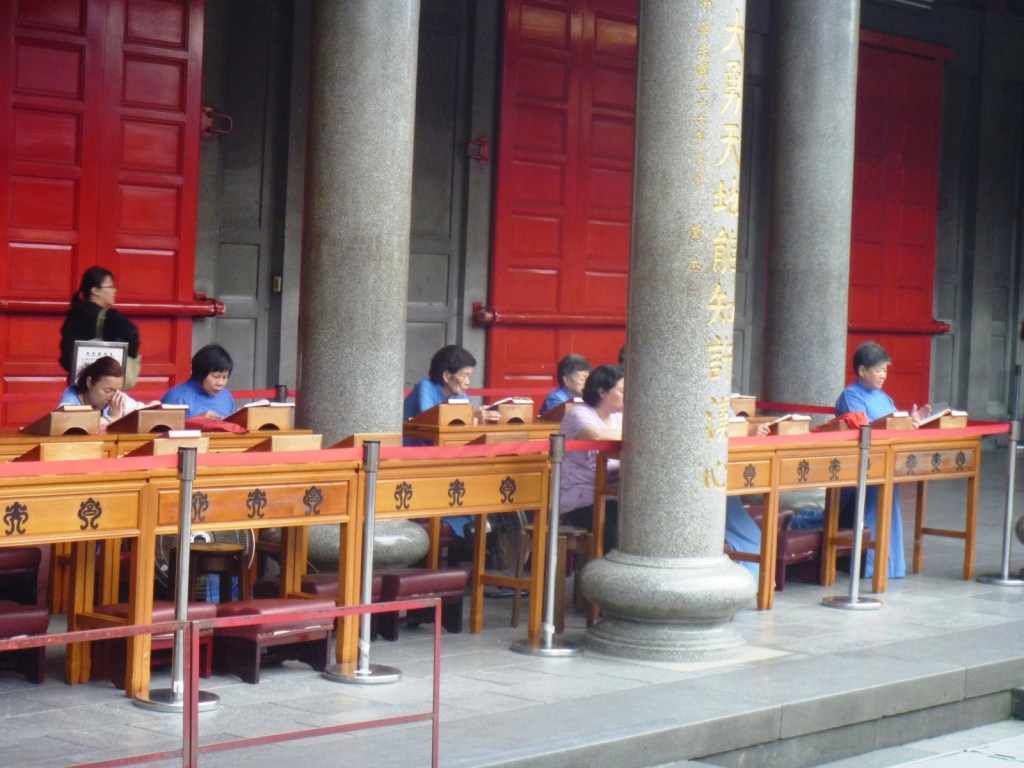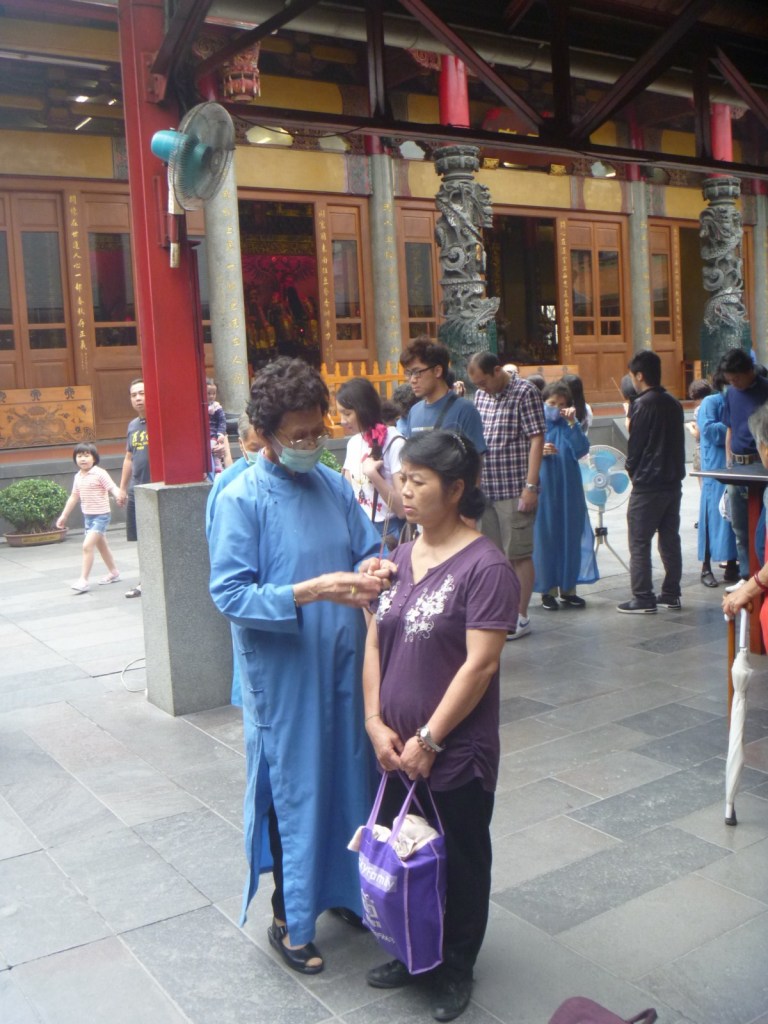After checking in at our hotel room and freshening up a bit, Jandy and I went out for lunch, bringing our jackets as it was drizzling when we arrived in Taipei. After changing a US$100 note for New Taiwan Dollars at Taipei Fortune Hotel (the banks were closed it being a Saturday), we walked along Song Jiang Road to Changchun Road where, near the corner, we dined on burgers at a MacDonald’s outlet.
Thus sated, we started our own tour of the city, walking back to Song Jiang Road, past our hotel, towards Minquian East Road, where the 7,000 sq. m. Xintian Temple (and an MRT station) is located. This relatively new temple (also called Hsing Tien Kong or Shingtien Temple), built in 1967, is one of the biggest and most popular (visitors sometimes number more than 20,000 a day) temples in Taipei.
The temple is dedicated to Guan Yu or Guan Gong (162-219 A D ), a famous general who lived during the Three Kingdoms period (184-280 AD) and an important character in the Chinese classic Romance of the Three Kingdoms. A man who valued loyalty and righteousness above all things, Guan Gong was later deified and worshiped as the God of War (and, by extension, of martial arts). Since he had a gift for strategy and tactics and was also adept at managing finances, Guan Gong is also worshiped as the patron deity of businessmen and merchants.
It being a weekend, this simple and dignified temple’s courtyard was filled with with crowds of worshipers bowing their heads, burning incense or kneeling in devotion, praying for help or seeking divine guidance by consulting oracle blocks. Sculptures of dragons feature prominently in this temple’s design. Its soaring, ship-prow roofs are adorned with carved dragons.
At the front courtyard of the hall, we noticed a censer (incense urn) with 2 handles in the shape of golden-winged dragons clinging to each side, a somewhat unusual design, with its 2-tiered metal canopy adorned with a horde of dragons’ heads stretching toward the sky.
On the main altar, we saw long tables with offerings of fresh flowers, fresh fruit (pineapples, bananas, apples, etc.), migao (a sticky, slightly sweet rice cake) and tea from the faithful. The temple forbids the killing of of animals as offerings; discourages the burning of ritual paper money (or “ghost” or “spirit” money) as an offering to the deities and the spirits of the deceased; the staging of operas for the gods; the presenting of gold medallions in gratitude to the deities; and the like. Candles are supplied for free to worshipers and there is no donation box (a first for traditional religion in Taiwan). After the gods have partaken of the offering’s essence, these are eventually given to the needy.
Among a pantheon of Chinese deities is the easily identifiable statue of the black-bearded, red-faced Guan Gong. In his youth, the face color of this defender of the weak was said to have been given to him by an immortal as a disguise after he killed a local bully. Along the hallways of the temple are elderly seated nuns, in blue robes, reading scriptures.
People also stand in line to get blessed by these blue-robed nuns who wave incense onto the clothes of visitors in the practice of shoujing (which restores souls that have left the body in a frightened state). These nuns, who tend to the day-to-day operation of the temple, also hand out incense sticks.
We missed visiting the “Street of Fortune Telling ,” the famous psychic alley located at the underground pedestrian passage under the Song Jiang-Minquan intersection, filled with numerous fortune telling stands. These fortune tellers, who do a brisk trade taking commercial advantage of the temple’s popularity, offer answers to troubled people or discuss the future.
Xingtian Temple: No. 109, Section 2, Minquan East Rd., Zhongshan District, Taipei, Taiwan. Tel: (+886-2) 2503-1831 and (+886-2) 2502-7924.
How to Get There: Take the THSR (Taiwan High Speed Rail) or TRA to Taipei Station, transfer to the MRT to Xingtian Temple Station. Go out Exit 3, then turn right. The temple is on the other side of a crossroad. You can also take the 5, 33, 49, 63, 72, 74, 214, 222, 225, 283, 285, 286, 505 or 617 bus to Xingtian Temple Stop.

